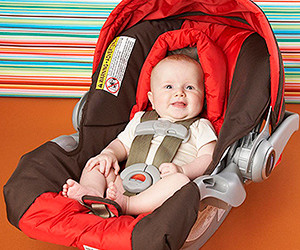By Michael Pines, Accident & Injury Prevention Expert
As parents, we strive for child safety in everything we do and provide. Car seats, of course, are no exception. The tragic and unfortunate truth is that many children are killed in car accidents every year; fortunately, we can do a lot to safeguard our young travelers against senseless injury through the proper installation and use of car seats.
When it comes to the safety of your child, it’s never been more important to follow these 4 essential tips for car seat safety.
1. Â READ (& REREAD!) THE MANUAL
Car seats may look fairly straightforward – a few quick buckles and you’re good to go. But before you strap in your child and head for the open roadways, it’s essential to read your car safety seat manual and install it according to specifications. Not all car seats are created equal; some models may require additional installation steps including the use of belts, levers or other tightening mechanisms. Be sure to read the manual in its entirety to ensure the very highest level of child protection – you just might surprise yourself by learning a few new things about your child’s safety seat along the way.
2. Â VERIFY INSTALLATION WITH A PROFESSIONAL
It doesn’t take more than a few minutes to double check your car seat installation. Plus, it’s absolutely free. After you’ve read the manual, swing by your nearest child car seat inspection station. To find the nearest inspection station, click here or log onto http://NHTSA.gov. For just a few extra minutes, you have the power to potentially prevent injury and even save your child’s life. Do it today!
3. Â DON’T FORWARD-FACE UNTIL AGE-READY
Rites of passage are fun for any parent: the first smile, eating solids, the first step. But one thing is for certain – you should never rush into turning your child’s car seat into a forward-facing position until the child is physically ready. Children should NEVER be turned into a forward-facing position until the age of 1 and 20 pounds at the bare minimum. In other words, if your child reaches 20 pounds at 11 months, you still need to maintain a rear-facing position until s/he reaches the age of 1 according to the American Academy of Pediatrics.
4. Â USE A BOOSTER SEAT FOR OLDER CHILDREN
Although older children may seem like they’re ready for standard seating, their small bodies cannot be properly restrained with the use of ordinary seat belts. Boosters raise the child so that seat belts can properly fit over their chest and shoulders. Older children may like the independence of an ordinary car seat, but parents should never allow youngsters to travel without a booster. Always provide booster seats to travelers under 4’9†and between the ages of 8 and 12. It’s a good idea to check with your state for booster seat laws. In California, for example, children under the age of 8 must be secured by a booster seat in the back seat. Eight-year-olds over the height of 4’9†may ride without a booster seat provided they are seated in the back of the vehicle. For more information on booster seat laws in California, click here.
ABOUT MICHAEL PINES
Michael Pines, founder of the Law Offices of Michael Pines, APC, is an accident and injury prevention expert in San Diego. He is an advocate for child safety and has fought for justice on behalf of families affected by senseless injury for over 20 years.




















